Artist Alex Bond shares a collection of classic paintings created in the style of the Dutch masters. Enjoy his portfolio and view more by visiting his website.
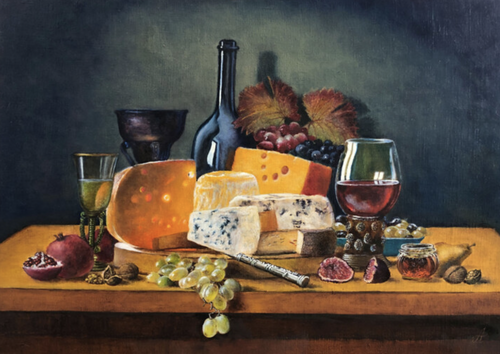
“Cheese and Grapes” oil, 50cm x 70cm
I present a collection of portraits of famous people, and a stunning series of still lifes inspired by the Dutch masters of the 17th century.
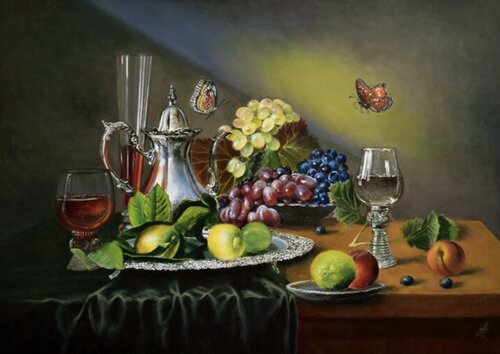
“Two Butterflies” oil, 50cm x 70cm
My passion for drawing began in early childhood. My father gave me my first painting lessons. Then there was an art school and a school-studio of fine arts. In parallel with my studies, I began to get acquainted with the paintings of various masters and eras. The real shock for me was the Renaissance masters: Leonardo da Vinci, Michelangelo, Raphael, Caravaggio. And the Dutch artists of the 17th century: Frans Hals, Rubens, Claes Heed, Peter Claes, and Jan Vermeer.
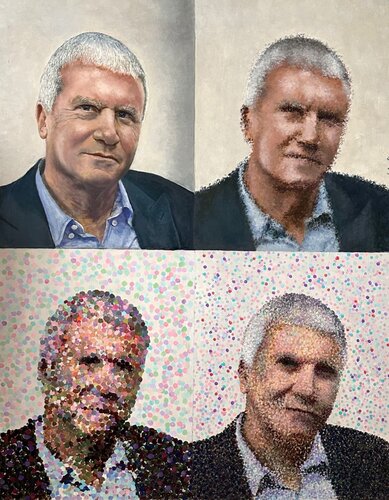
“Transformation (Larry Gagosian)” oil, 100cm x 80cm
My love for painting pushed me to a scrupulous long-term study of the techniques of the old masters. This included multi-layer painting, physical visual separation of colored layers of paint, color transparency and their influence on the overall color of the picture. I used this practical application in my own paintings.
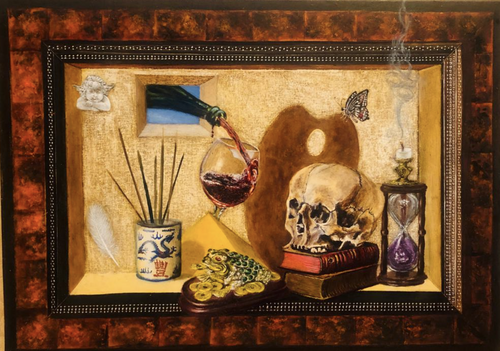
“My Whole Life” oil, 50cm x 70cm
Over the years, deep professional understanding and implementation of the technique of multi-layer painting has increased immeasurably and produced results. This manifested itself in a certain color, richness, sophistication and in a kind of festive or spiritual, calm mood in my canvases.
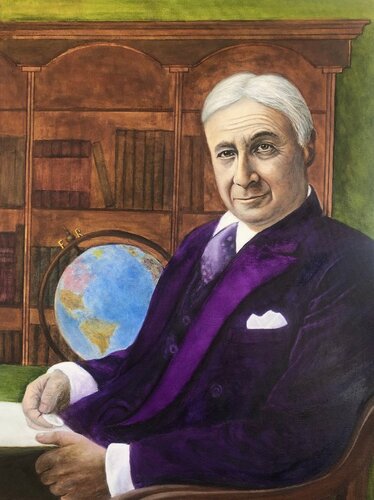
“Bernard Baruch (1870-1965)” oil, 80cm x 60cm
I have been working in this technique for over 50 years. The main genres of my painting are portrait, still life, landscape, and marine. But a portrait that reveals the depth of a person’s essence, his soul, occupies a special place. Just like a still life, I for the most part, create paintings in the “Dutch style.” The theme of “Dutch still life” was not an accidental choice. Thanks to the enormous creative heritage of the school of Dutch masters, each object is multi-valued and endowed with a certain subtext.
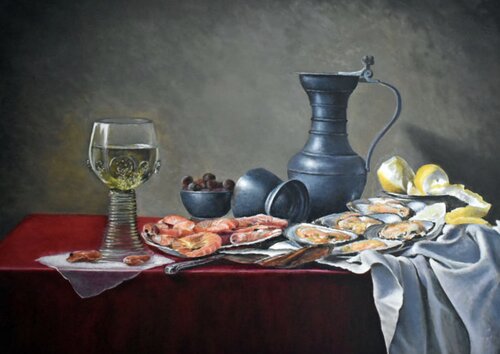
“Breakfast of Mussels According to Old Dutch Memories” oil, 50cm x 70cm
For example, on the one hand, oysters clearly hint at worldly temptations. On the other hand, they denote the naked soul of a person, ready to leave the world and body, and promise him salvation and eternal life. A bouquet of flowers symbolizes the impermanence of life. It tells us that earthly joys are as transitory as the beauty of a flower.
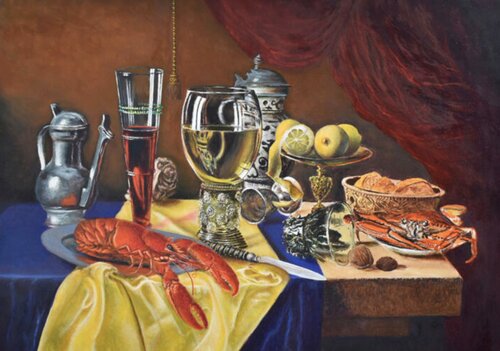
“Still Life in the Dutch Style” oil, 50cm x 70cm
The theme of the transience of human existence is contrasted with the immortality of the soul. Signs of the frailty of earthly life suddenly turn out to be symbols of salvation. Bread and wine suddenly turn into symbols of the sacrament of communion. They associate the viewer with the body and soul and blood of Christ.
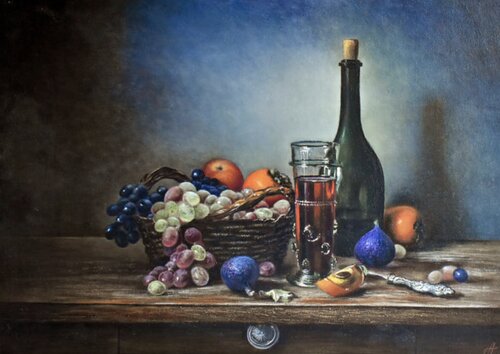
“Basket of Grapes” oil, 50cm x 70cm
In my still lifes, I hint to the viewer that a person is always free to choose between them: the spiritual as eternal and the earthly as transitory. In my works I have always strived to convey my sense of the world and its beauty.
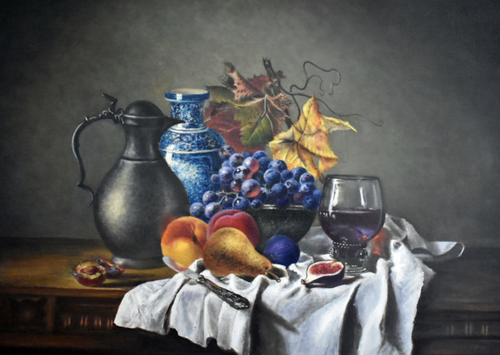
“Chinese Vase and Fruits” oil, 50cm x 70cm
Collectors and art dealers are invariably attracted by the harmony of the existence of objects in a single space, the thoughtful composition, detail and color, the ratio of warm and cold color shades, brightness and contrast. My paintings are presented in galleries and private collections in many countries around the world.

